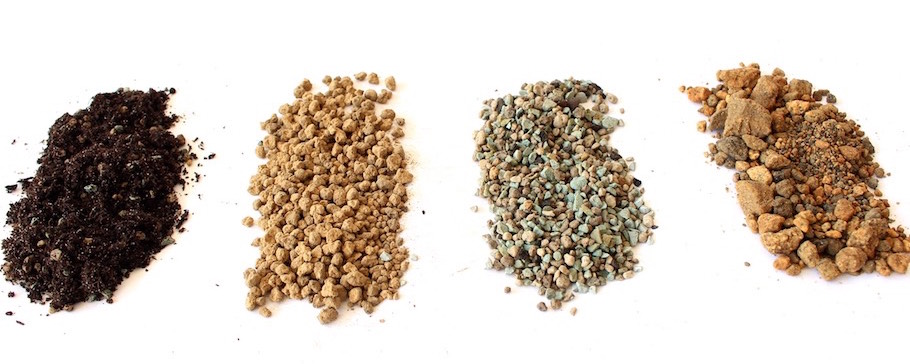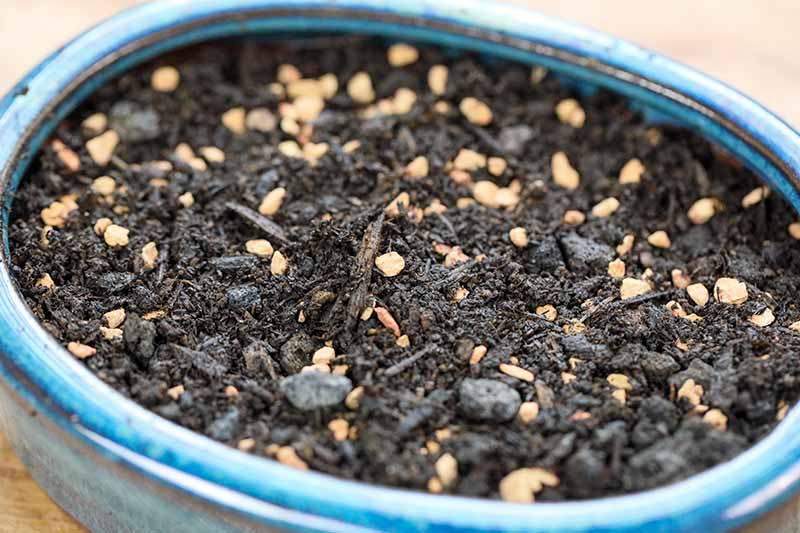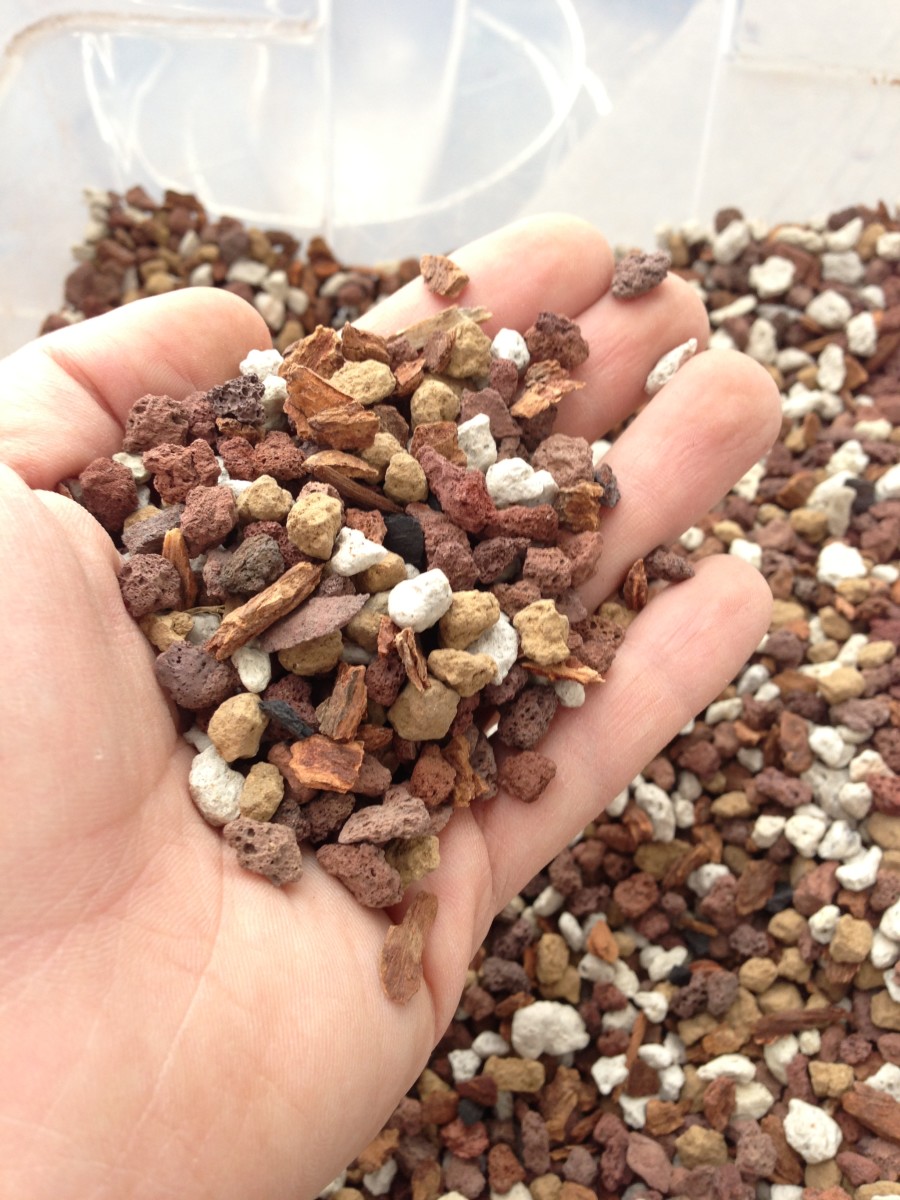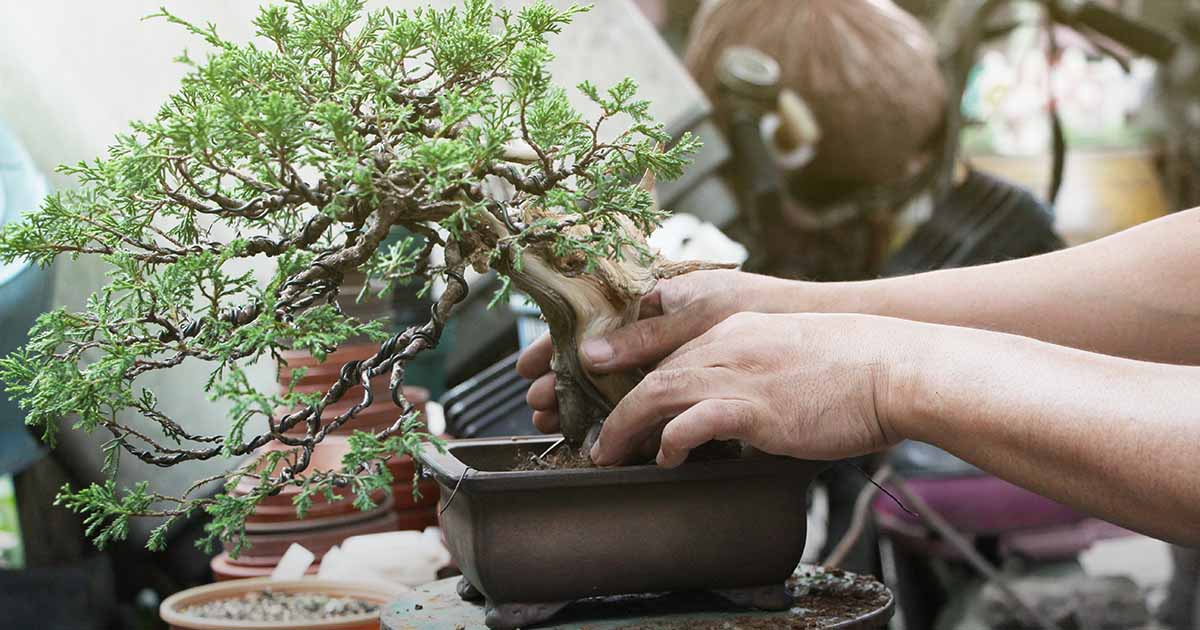In the following paragraphs, we'll explore the differing types of soil and substrates Employed in bonsai cultivation, like natural and inorganic choices.
We are going to also find out encouraged soil mixtures for a variety of bonsai species, for instance deciduous, coniferous, and indoor kinds. From akadama and pumice to moss and river sand, we'll dive into your intriguing globe of bonsai soil and assist you to realize why it's a very important Section of cultivating these exquisite trees.

Bonsai soil
What is bonsai soil?
Bonsai soil is a specialized type of soil that is specifically formulated for growing and maintaining bonsai trees. Unlike regular garden soil, bonsai soil is well-draining and provides the necessary nutrients and moisture balance for the tree's root system. The composition of bonsai soil is carefully designed to meet the unique needs of bonsai trees, ensuring their health and longevity.
The importance of bonsai soil
The choice of soil plays a crucial role in the success of your bonsai tree. The right soil provides optimal drainage, allowing excess water to flow freely and preventing root rot. It also promotes a healthy and well-developed root system, which is essential for the overall health and growth of the tree. Bonsai soil retains moisture while allowing air to reach the roots, striking the perfect balance for the tree's needs. Choosing the right bonsai soil is essential for maintaining a healthy and thriving bonsai tree.
Bonsai substrates
What are bonsai substrates?
Bonsai substrates refer to the different materials that can be used to create the ideal soil composition for bonsai trees. These substrates are carefully chosen to meet the specific needs of different species of bonsai trees and to ensure proper water drainage and nutrient availability.
Different types of bonsai substrates
There are various types of bonsai substrates available, each with its own unique characteristics and benefits. Some common bonsai substrates include:
- Organic materials: These include ingredients such as bark, peat moss, and coconut coir. Organic substrates help retain moisture and provide essential nutrients to the bonsai tree.
- Inorganic elements: These contain components like pumice, lava rock, and akadama. Inorganic substrates give outstanding drainage, making sure that extra h2o isn't going to accumulate across the roots with the bonsai tree.
- Soil amendments: They're substances that are included into the soil mixture to reinforce its Attributes. Samples of soil amendments contain perlite, vermiculite, and sand. They Increase the soil's aeration, water-holding potential, and nutrient availability.
By knowledge the differing types of bonsai substrates and their Qualities, you can pick out the most suitable just one for your bonsai tree's wants.
Organic or Inorganic Soils
Natural soils for bonsai
Organic and natural soils for bonsai are made up of natural components which include bark, peat moss, coconut coir, and compost. These supplies provide a abundant supply of nutrients with the bonsai tree and endorse healthful root progress. Organic soils also have excellent drinking water retention Houses, making sure that the tree gets suitable humidity between watering sessions. Nevertheless, it is vital to notice that organic and natural soils may break down as time passes and become compacted, bringing about bad drainage and opportunity root difficulties.
Inorganic soils for bonsai
Inorganic soils for bonsai include resources like pumice, lava rock, akadama, and soil amendments like perlite or vermiculite. These supplies have exceptional drainage Homes, blocking waterlogged soil and promoting aeration across the roots. Inorganic soils are favored by lots of bonsai enthusiasts because of their longevity and ability to deliver a steady surroundings for the bonsai tree's root process. Nevertheless, They could have to have additional Regular watering and extra fertilization, as they do not maintain just as much moisture or nutrients as natural soils.
Positives and negatives of utilizing organic and natural and inorganic soils for bonsai
Deciding on in between organic and natural and inorganic soils on your bonsai tree is determined by various variables, such as the certain species of tree, your weather, and private Tastes. Allow me to share the pros and cons of every:
Organic and natural soils:
- Professionals: Give nutrients, very good water retention, boost healthier root growth.
- Cons: Could break down eventually, probable for inadequate drainage Otherwise effectively maintained.
Inorganic soils:
- Pros: Fantastic drainage, lengthy-lasting, steady natural environment for roots.
- Drawbacks: Considerably less h2o retention, might call for extra Regular watering and fertilization.
By taking into consideration the pluses and minuses of both of those organic and natural and inorganic soils, you can make an informed selection determined by the precise requires of your bonsai tree.
Soil elements
Vital components of bonsai soil
Bonsai soil is usually composed of three principal elements: grit, natural and organic issue, and clay. These factors function collectively to make The best soil composition with the bonsai tree's root procedure.
- Grit: Grit, for example sand or perlite, provides drainage and aeration while in the soil. It can help reduce waterlogging and allows air to reach the roots.
- Organic issue: Natural make any difference, for instance compost or bark, presents nutrients towards the bonsai tree. In addition, it aids retain dampness and improve the soil's overall structure.
- Clay: Clay particles offer some water retention qualities and support bind the soil alongside one another. Nevertheless, excessive clay can lead to very poor drainage and compaction.
Position of every soil part
Just about every soil element plays a vital job in developing a very well-balanced and healthful natural environment with the bonsai tree's roots.
- Grit: Grit offers the mandatory drainage and aeration during the soil. It helps prevent the roots from sitting in stagnant water, minimizing the potential risk of root rot and advertising and marketing Total root well being.
- Organic and natural issue: Natural and organic issue supplies necessary nutrients into the bonsai tree. It aids in moisture retention and contributes to the overall structure in the soil.
- Clay: Clay particles enable bind the soil collectively and provide some h2o retention ability. Nonetheless, it is vital to balance the level of clay in order to avoid concerns like very poor drainage and compaction.
website
By understanding the roles of each and every soil element, you are able to develop a well balanced bonsai soil blend that meets the precise desires of your respective tree.

Recommended Bonsai soil mixtures
Common bonsai soil mixtures
There are several common bonsai soil mixtures that have been proven effective for various types of bonsai trees. These mixtures typically consist of a combination of inorganic substrates, organic matter, and soil amendments.
Some of the commonly used bonsai soil mixtures include:
- Akadama, pumice, and lava rock: This mixture is popular among bonsai enthusiasts for its excellent drainage and water retention properties.
- Akadama, lava rock, and natural matter: This combination combines the many benefits of inorganic substrates Along with the nutrient-prosperous properties of organic and natural subject.
- Pumice, perlite, and bark: This combination offers excellent drainage and aeration while retaining some humidity and offering nutrients.
They are only a few samples of bonsai soil mixtures, and the ideal mixture will rely on the precise demands of your respective bonsai tree as well as your local weather.
Components to take into consideration when selecting a bonsai soil combination
When picking out a bonsai soil combination, it is vital to consider the subsequent elements:
- Species of bonsai tree: Various species have distinct humidity and nutrient specifications. Investigate the precise needs of the tree to choose a soil combination that satisfies its demands.
- Local weather: The weather you reside in can impact the dampness retention properties on the soil. Evaluate the common humidity and temperature in your neighborhood when choosing a soil mixture.
- Watering habits: Your own watering patterns and schedule need to align Along with the soil mixture you end up picking. Some mixtures require a lot more frequent watering, while others keep humidity for lengthier intervals.
- Spending plan: Some soil parts could possibly be dearer than others. Take into account your price range when deciding upon a soil combination.
By getting these things under consideration, you can pick a bonsai soil mixture that provides the top escalating ailments to your tree.
Deciduous Bonsai soil
Greatest soil composition for deciduous bonsai
Deciduous bonsai trees, for instance maple or birch, have specific soil prerequisites to assist their expansion and wellness. The ideal soil composition for deciduous bonsai usually features a mixture of natural make any difference, inorganic substrates, and soil amendments.
A recommended soil composition for deciduous bonsai may perhaps incorporate:
- Akadama: Offers fantastic water retention though enabling for drainage. What's more, it releases nutrients bit by bit as time passes.
- Pumice: Promotes aeration and drainage within the soil, preventing waterlogging.
- Bark or peat moss: Adds natural and organic subject on the soil, providing nutrients and dampness retention.
This soil composition ensures that the roots of deciduous bonsai trees obtain the appropriate equilibrium of moisture, nutrients, and oxygen for ideal development.

Coniferous and Pine soil
Ideal soil mixture for coniferous and pine bonsai
Coniferous and pine bonsai trees have specific soil requirements due to their water retention needs and preference for acidic soil. An ideal soil mixture for coniferous and pine bonsai should provide good drainage while retaining moisture and maintaining the desired pH level.
A recommended soil mixture for coniferous and pine bonsai may include:
- Akadama: Provides excellent water retention while allowing for sufficient drainage. It releases nutrients slowly over time.
- Pumice: Promotes aeration and drainage while in the soil, blocking waterlogged roots.
- Peat moss: Provides natural and organic make any difference and acidity to the soil, generating a super pH stage for coniferous and pine trees.
This soil combination ensures that the roots of coniferous and pine bonsai trees get the ideal stability of moisture, nutrients, and acidity for their specific desires.
Akadama
What's akadama?
Akadama can be a sort of clay soil that is broadly Utilized in bonsai cultivation. It is actually noted for its exceptional drinking water retention properties, which guarantee a gradual supply of moisture to the bonsai tree's roots. Akadama can be prized for its power to launch nutrients little by little with time, delivering a regular source of nourishment to the tree.
Advantages of making use of akadama in bonsai soil
Making use of akadama in bonsai soil provides quite a few benefits:
- H2o retention: Akadama has exceptional h2o retention properties, permitting it to carry dampness without having turning into waterlogged. This makes certain that the bonsai tree's roots receive a continual offer of drinking water, advertising healthy expansion.
- Nutrient release: Akadama gradually releases nutrients into the soil after a while, supplying a regular source of nourishment with the bonsai tree. This lessens the necessity for Regular fertilization and assists sustain a balanced nutrient profile.
- Aeration: Inspite of its h2o retention abilities, akadama also presents suitable aeration to your bonsai tree's roots. It permits air to reach the root technique, stopping challenges for example root rot because of not enough oxygen.
By incorporating akadama in to the bonsai soil, it is possible to create an exceptional rising surroundings for your personal tree, guaranteeing its health and vitality.

Lava rock
How lava rock benefits bonsai soil
Lava rock is a popular component in bonsai soil mixtures due to its excellent drainage and aeration properties. It is typically used in conjunction with other substrates to create the ideal soil composition for bonsai trees.
The benefits of lava rock in bonsai soil include:
- Drainage: Lava rock provides excellent drainage, preventing waterlogging and ensuring that excess water flows freely through the soil. This helps prevent root rot and provides a healthy environment for the roots to thrive.
- Aeration: The porous mother nature of lava rock makes it possible for air to flow into within the soil, furnishing oxygen to your bonsai tree's root procedure. Good aeration is crucial for wholesome root improvement and Total tree advancement.
- Longevity: Lava rock is often a tough substance that does not stop working easily. This makes sure that the soil composition stays stable over time, lessening the need for frequent soil replacements.
Lava rock is on the market in different dimensions and shapes, making it possible for for personalisation according to the precise needs within your bonsai tree and soil needs.
Differing types of lava rock
You'll find differing kinds of lava rock that could be Utilized in bonsai soil mixtures, like:
- Black lava rock: Black lava rock is usually a frequently made use of product in bonsai soil mixtures. It offers exceptional drainage Attributes and provides an aesthetic component to the overall presentation from the bonsai tree.
- Red lava rock: Pink lava rock is another well known selection in bonsai soil mixtures. It offers identical drainage and aeration Added benefits as black lava rock but has a distinct reddish colour that provides Visible fascination towards the container.
Equally black and red lava rocks are broadly out there and may be easily included into your bonsai soil mixture.
Potting
Essential techniques for thriving bonsai potting
Potting is really a important process in bonsai cultivation, since it immediately impacts the wellbeing and development in the tree's roots. Here are several critical strategies for profitable bonsai potting:
- Pick the right pot dimension: Find a bonsai pot that enables for root advancement while nevertheless supplying a cosy match. Stay away from pots which have been too big, as they can cause too much soil humidity and poor root improvement.
- Use bonsai wire: Secure the tree within the pot making use of bonsai wire to be sure security. This stops the tree from shifting or turning out to be uprooted for the duration of watering or strong winds.
- Trim and spread the roots: Before potting the bonsai tree, carefully trim and distribute out the roots. This encourages outward advancement and helps prevent root tangling or root-certain concerns.
- Incorporate mesh screens: Spot mesh screens more than the drainage holes at the bottom of your pot to circumvent soil erosion and assure right drainage.
- Use fresh bonsai soil: When potting, always use contemporary bonsai soil to offer the required nutrients and optimal expanding conditions with the roots.
By next these necessary recommendations, it is possible to make certain a successful potting system and boost the overall health and fitness and growth of the bonsai tree.
The function of bonsai pots in soil dampness Manage
Bonsai pots Participate in an important job in soil dampness Manage, instantly impacting the wellbeing and development of the tree. Bonsai pots are usually shallow and have drainage holes, letting extra h2o to flee and avoiding the soil from becoming waterlogged.
The look of bonsai pots encourages evaporation and air circulation, which will help control soil dampness levels. The shallow depth and extensive opening from the pot expose additional surface area space in the soil to the air, aiding in dampness evaporation. This helps prevent the roots from sitting in excessively moist soil, reducing the chance of root rot and other drinking water-related troubles.
Additionally, the drainage holes in bonsai pots let any excessive water to escape, blocking waterlogged soil and marketing aeration across the roots. Right aeration is essential for the overall health and development of the basis procedure, making certain the bonsai tree receives the required oxygen for advancement.
By using bonsai pots suitable for powerful humidity Manage, it is possible to create a favorable surroundings for your personal bonsai tree's roots and boost its overall well being and vitality.
In conclusion, picking out the ideal bonsai soil is vital for your accomplishment and wellness of your bonsai tree. Knowing the different sorts of bonsai substrates, the job of organic and inorganic soils, The main element parts of bonsai soil, and the varied suggested soil mixtures will allow you to give the optimal expanding situations on your bonsai tree. No matter if you do have a deciduous or coniferous bonsai, incorporating products like akadama and lava rock can greatly enhance the soil's drainage and nutrient availability. Additionally, being attentive to potting strategies and utilizing bonsai pots designed for moisture Command will further more aid the flourishing progress of the bonsai tree. With suitable comprehension and implementation of bonsai soil procedures, you could take pleasure in the beauty and artistry of bonsai cultivation For many years to come website back.
